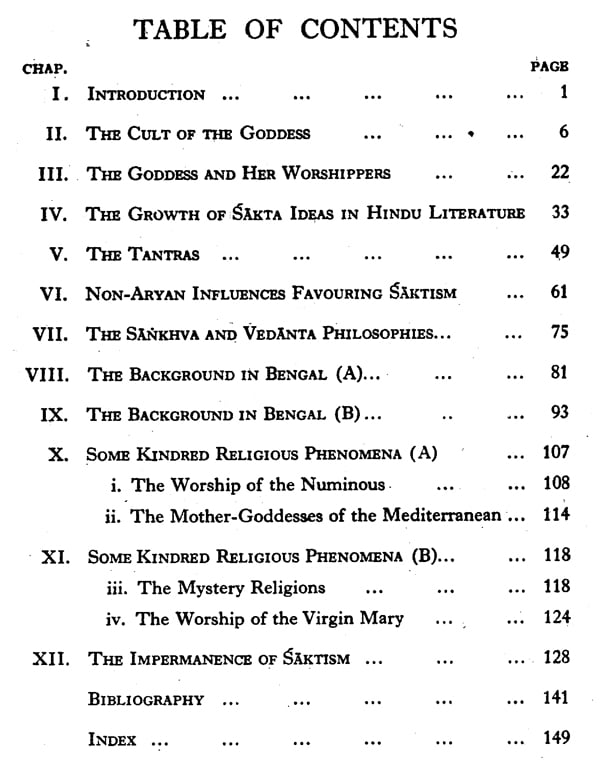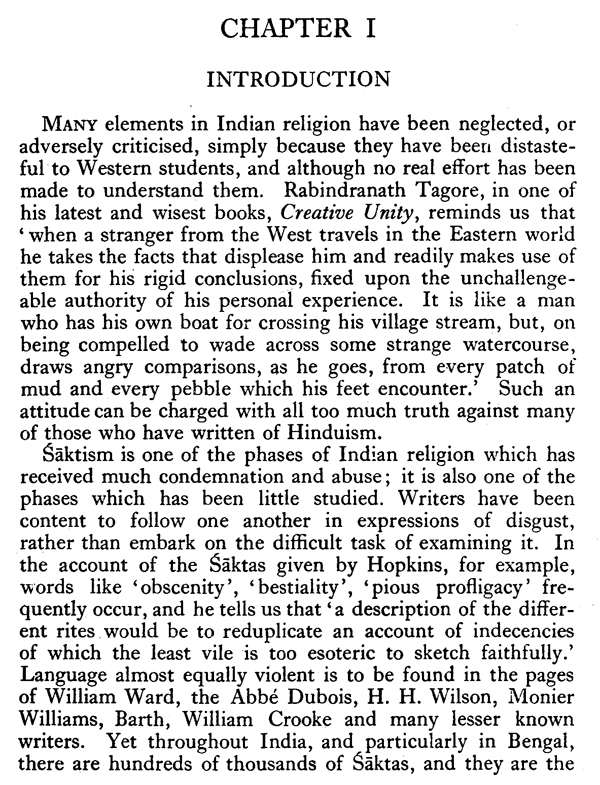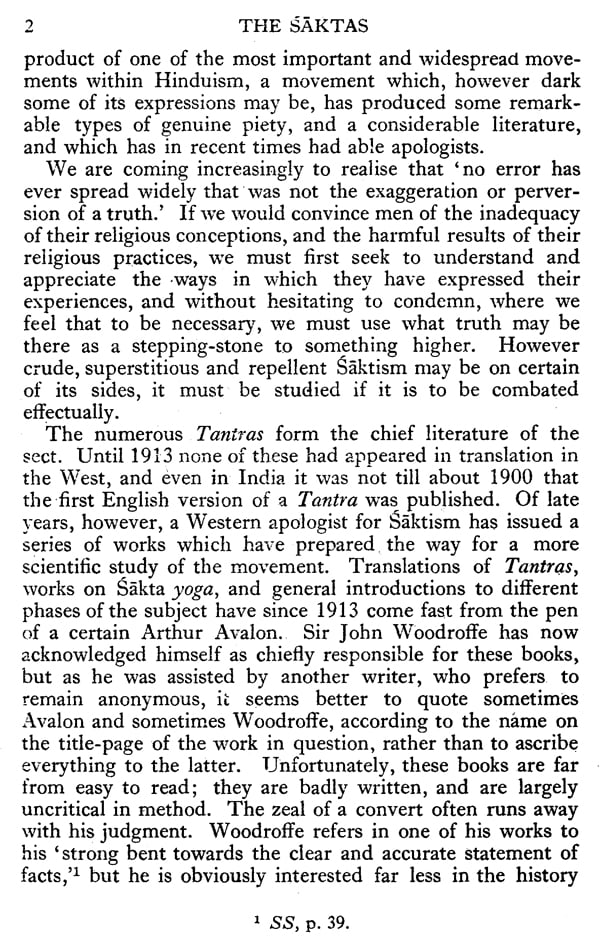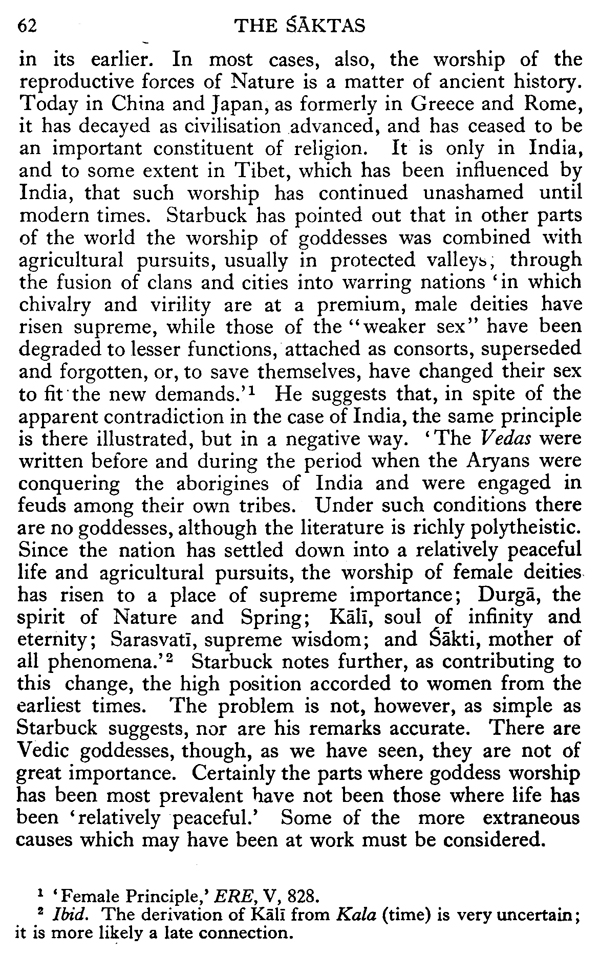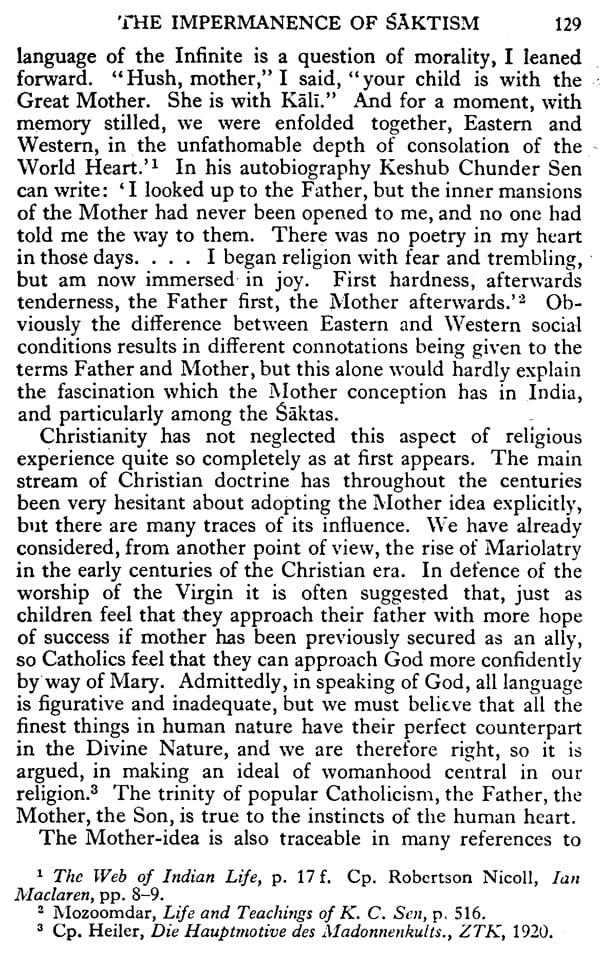
The Saktas (An Introductory and Comparative Study)
Book Specification
| Item Code: | NAV790 |
| Author: | Ernest A. Payne |
| Publisher: | Cosmo Publications, New Delhi |
| Language: | English |
| Edition: | 2004 |
| ISBN: | 9788129200792 |
| Pages: | 170 |
| Cover: | PAPERBACK |
| Other Details | 8.50 X 5.50 inch |
| Weight | 180 gm |
Book Description
THE SAKTAS
Throughout India, and particularly in Bengal, there are hundreds of thousands of Saktas, and they are the product of one of the most important and widespread movements within Hinduism, a movement which, however dark some of its expressions may be, has produced some remarkable types of genuine piety, and a considerable literature.
The three chief characteristics of Saktism are its idea of the Deity as Destroyer, its conception of god as Mother, and its attention to ceremonial. Each of these features can be paralleled in other forms of Hinduism, but nowhere are they so combined and emphasised as in this sect.
The word sakti means 'energy'. Power or Force is conceived as the active principle in the universe, and is personified as a goddess. From the primordial Sakti every other form of activity proceeds. Under many different names it is worshipped as Devi or the Mother.
Saktism is a movement as complex as any within Hinduism. We propose first of all to describe the sect, and to outline its practices; then to consider the rise of Sakta ideas in the religious literature of Hinduism. An attempt will be made to indicate some of the possible causes of its popularity, and the origin of some of its beliefs. The background in Bengal and Assam will then be filled in greater detail, for only with that background in mind are we in a position to understand the fine examples of intense devotion and touching faith to be found among the Saktas.
This study was embarked upon at the suggestion of the late Dr. J. N. Farquhar, to whom all those interested in Indian religion owe so much. But for his generous help and encouragement it would never have reached its present form. It is intended merely as an introduction to the subject, based upon the literature already available in Europe.
It is difficult to be consistent in the transliteration of Indian words, particularly when authors are quoted who vary greatly in the systems they adopt. In general an effort has been made to follow the scheme used by Dr. Farquhar in his Outline of the Religious Literature of India.
I am indebted to many friends who have drawn my attention to books, read the MS., and helped in other ways. Special thanks are due to Dr. Edward Thompson, of Oxford; the Rev. W. Sutton Page, of the London School of Oriental Studies; and the Rev. E. C. Dewick, of Calcutta. Marburg is making a name for itself among German universities for its interest in Comparative Religion. Much of the work for this book was done there.
In dealing with this subject I have endeavoured to keep in mind the words of the Apostle Paul, which form the motto of Regent's Park College, where I received a part of my training: Prove all things; hold fast that which is good.'
**Contents and Sample Pages**
